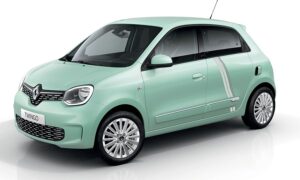Renault Twingo (incl. Kwid) Owner's Manual
You can find 12 different owner's manuals for the Renault Twingo (incl. Kwid) on this page that are in the PDF format.
Yearly Twingo Owner's Manuals
The years available stretch from 2014 through to 2025 and to view the manual you just click the name underneath.

- Manufacturer: Renault
About The Twingo
The city car classed Renault Twingo is now in its third generation of design after first entering production in 1992.
These owner’s manuals will give you all the information about this vehicle so you can decide if it’s right for your needs.
Other city cars include the Fiat Panda and the Peugeot 108 – the smallest classification defined by the European Commission.
To be classed as a city car a vehicle must fall under a particular weight and size limit but will benefit from lower tax rates.
The first Twingo’s that hit the showrooms in the early 1990s were intended to replace the Renault 4 and form a “minivan” shape.
For the first 2 generations of the cars life, customers could only have a 3 door option but with the introduction of the 3rd generation in 2014 a 5 door became available.
Another huge change for the Twingo was that the front-engine front-wheel-drive chassis was completely turned on its head – it was now a rear-mid engine rear-wheel-drive car.
This huge change of engine position was to aid the handling in the car and make it easier to adapt to the electric trim that was released in early 2020.
The shift in layout of the car has meant a sacrifice to storage space but allows this car to benefit from an investment in research that is put into the Smart range of cars that are produced in the same factory.
Safety ratings for the Renault Twingo have increased with each generation of design, the original scored just 3 out of 5 stars, the second reached 4 and the most recent topped out at a full 5 out of stars.
Renault Kwid Owner’s Manual
A newer city car from the French car manufacturer designed for emerging markets such as India and Brazil, the Renault Kwid is longer yet narrower than its sister model the Twingo.
It is defined as an entry crossover model by the company and is built on a shared platform used by Renault, Dacia and Datsun’s.
The Kwid has a higher sitting position and road clearance level than most similar small cars in order for it to cope with the rough roads of developing countries.
Designers (who already had the Dacia Logan success under their belts) from Renault actually went and lived in India to come up with an ideal model for the country.
Engine choices are on the small side but fall into what is expected for a car of this size, especially when you consider it is being built for countries with a smaller GDP per capita.
Although the car is small the storage space is surprisingly abundant with 300 litres available which makes it a category champion in that respect.
The fuel economy is also exceedingly high helping push sales in a country where they import most of their oil.
A Brazilian version of the Renault Kwid has also been made with the addition of 4 airbags, structural improvements and a slightly larger engine to deal with the added weight.









